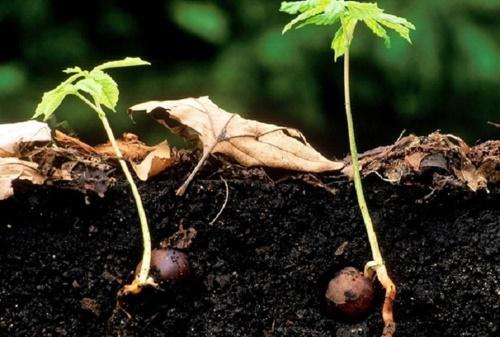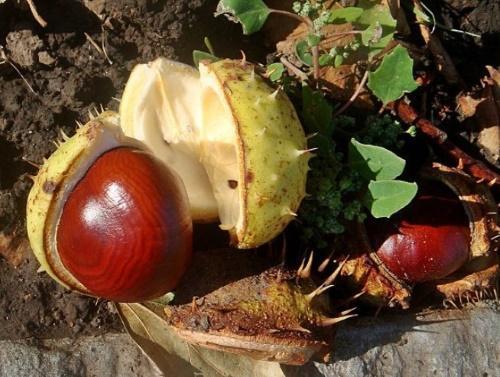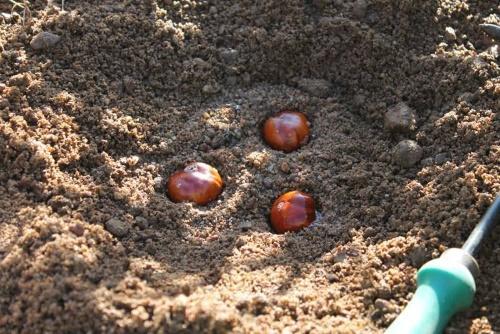Simple secrets of how to grow chestnuts at home
 Buying a seedling, be it a chestnut or another crop, on the one hand, is a profitable business. And there is no need to bother with its cultivation, and fruiting will come earlier. However, the finished trees are decent, so many gardeners prefer to plant them with seeds. Of course, this is a rather lengthy process, but financially more profitable. If you decide to nourish a chestnut tree yourself, the main thing is to find good ripe fruits. Knowing how to grow chestnuts, all that remains is to plant them and provide care. And how to do it correctly, we will tell you today.
Buying a seedling, be it a chestnut or another crop, on the one hand, is a profitable business. And there is no need to bother with its cultivation, and fruiting will come earlier. However, the finished trees are decent, so many gardeners prefer to plant them with seeds. Of course, this is a rather lengthy process, but financially more profitable. If you decide to nourish a chestnut tree yourself, the main thing is to find good ripe fruits. Knowing how to grow chestnuts, all that remains is to plant them and provide care. And how to do it correctly, we will tell you today.
Find out:how to fry chestnuts at home in a pan.
Where can I get chestnut nuts, and do they need preliminary preparation?

Fruits with such a dense skin definitely need stratification, which increases their germination. It can be carried out in a natural way, in the garden, or by artificially creating the necessary conditions. It all depends on when and where the chestnuts will be planted.
Planting methods for chestnuts
So, the nuts are collected, what to do with them next? There are two ways to go:
- Immediately plant the chestnuts in the garden in autumn, having organized the so-called "nursery". This means that they will grow in one place, but with a distance between the holes of at least 15 cm. The advantages of this planting: there is no need to store the fruits until spring, which often dry out over the winter. In addition, chestnuts undergo natural stratification outdoors in winter.

- Save until spring and then plant in pots in March. In this case, the chestnuts should be placed in a container with sand and taken to the basement. In the apartment, a refrigerator is useful for this purpose. Before planting, the nuts are soaked for a couple of days in water to soften the shell. It is better to plant it immediately in separate small pots, deepening by no more than 5 cm.

When to transplant seedlings into open ground?
It is not recommended to keep seedlings grown at home for the second year indoors. It would be better to transplant them into the garden already in the month of May so that the chestnuts will get stronger by winter. But chestnuts planted in a nursery can be planted in permanent places for the next season.
Chestnuts need a lot of space - the distance between them in the garden should be at least 3 m.
How to grow chestnuts - caring for seedlings
 Chestnuts grow slowly but surely, gaining height every year and thickening the stem and branches. At this time, they will need help, namely:
Chestnuts grow slowly but surely, gaining height every year and thickening the stem and branches. At this time, they will need help, namely:
- Watering. While the trees are young, they need to be watered often; with age, the intervals between watering can be increased.
- Top dressing. Fertilizers need to be applied twice a season. In the spring, it will be nice to feed with a urea solution, and in the fall - nitroammophos... During breaks, you can fertilize with organic matter.
- Shelter. Young seedlings in the garden for the winter are best protected from wind gusts and animals. To do this, 3-4 supports are installed around them and covered with a tarpaulin. Before this, the trunk circle is mulched. Thin fragile seedlings are tied to a support so that they do not break. A bright ribbon, as an attention-grabbing sign, does not hurt, so as not to accidentally step on low plants.
Chestnuts lend themselves well to shaping. The first pruning is carried out in the fourth year of life, shortening the central stem by ¼ of its height. You can also remove the tops from the side branches a little. In the future, the chestnuts are trimmed annually in the spring, not forgetting to thin out the crown, and remove dry shoots.